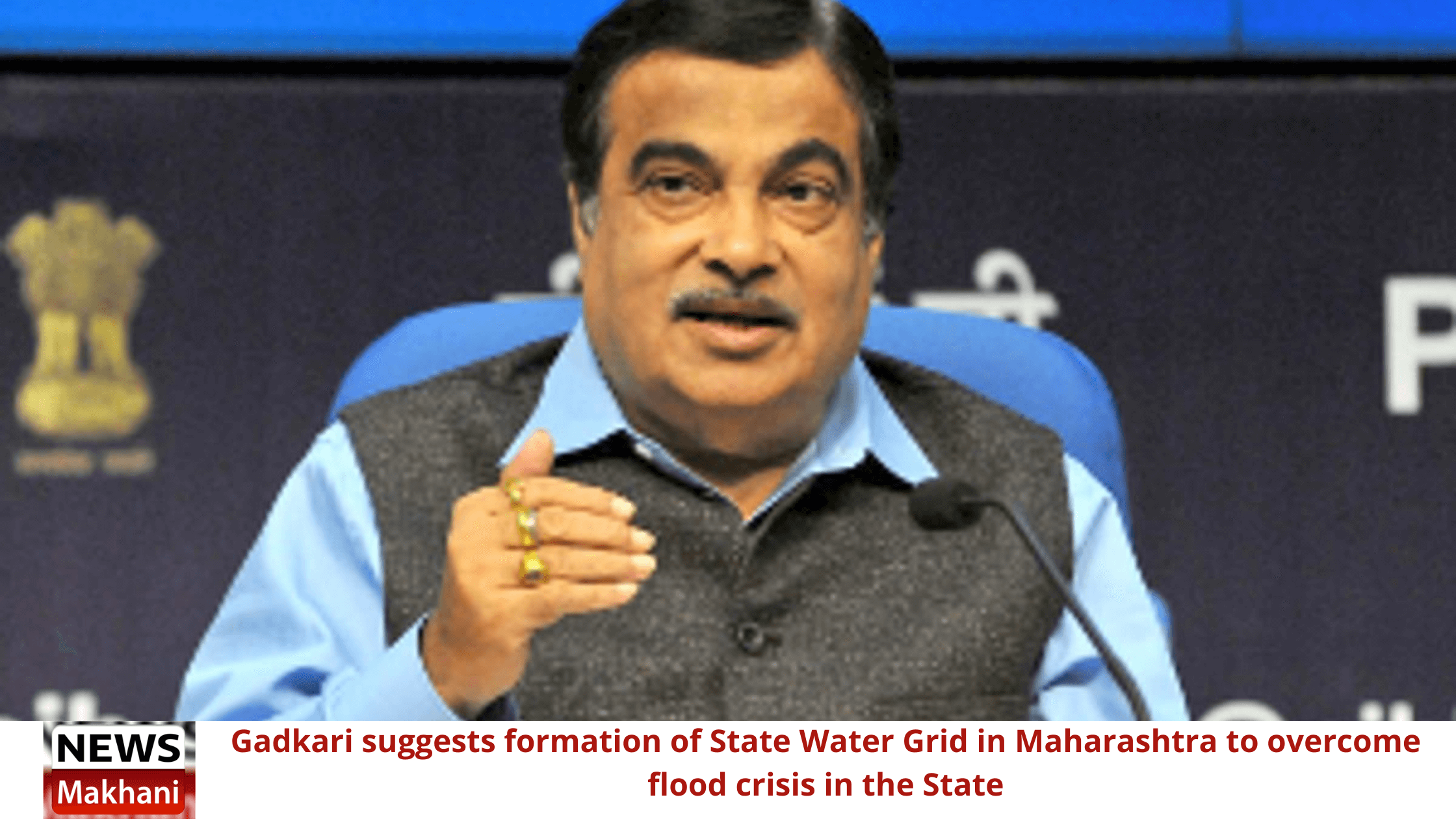Gadkari suggests formation of State Water Grid in Maharashtra to overcome flood crisis in the State
New Delhi, October 17
Nitin Gadkari, Union Minister for Road Transport, Highways and MSMEs has requested the Maharashtra Government to take initiative for preparation of detailed project report (DPR) for formation of the State Water Grid to overcome the recurring flood crisis in the State. This would help the government to ensure the availability of the water in drought prone areas and save the resources to manage the flood crisis. In a letter dated 14th October, 2020 to Chief Minister Udhav Thackeray, his cabinet colleagues and Sharad Pawar, MP, he has sought early decision of the state government on this issue, followed by actions thereon.
Gadkari has drawn the attention of the Chief Minister in this letter towards the serious issue of heavy loss of lives and property that occur in the state of Maharashtra every year due to floods. He has added that the floods create and trigger serious problems in different parts of the state and there is an urgent need to chalk out a plan to manage this natural disaster that becomes grave because of other man made factors.
The Union Minister has suggested to the Government of Maharashtra to take up the ambitious project of formation of the State Water Grid on the lines of the National Power Grid and Highway Grid. The idea is to divert the flood water from one river basin to the other river basin in the drought prone area of the state. The areas with shortage of the water, scanty rainfall can get relief by the Grid. This would help to increase the area under irrigation, while bringing significant reduction in the numbers of suicides of farmers. The letter goes on to say that various studies have shown that the incidents of the farmers’ suicide have come down in the areas where the irrigation cover is more that 55%.
The Minister mentioned that this would also help to increase agriculture produce and strengthen the rural and national economy. The diverted flood waters would relieve the stress on the local resources. Transportation of goods and passengers through rivers (Water Transport) can be commenced in near future. Fishing and other businesses can flourish alongside and major employment can be generated if such project is taken up as an essential infrastructure.
Gadkari has informed that his Ministry is doing water conservation by using the soil/murum from water bodies, drains and rivers for construction of Highways. This synchronization of N.H. construction and water conservation results not only in increasing water storage capacity but saving environment. Initially this activity was done on large scale in Buldhana district as pilot project and hence named as ‘Buldhana pattern’. With this activity in Maharashtra, around 225 lakh cubic meter of material from water bodies, drains and rivers has been used in Highway works with a result of increase of 22500 TCM (Thousand Cubic Meter) of water storage capacity at `No cost to State Government’. This has charged ground water table. Due to deepening and training of river, drains, etc, the floods have reduced, which otherwise spreads in nearby field due to reduced discharge capacity of rivers and drains. This convergence has been appreciated and accepted by NITI Aayog, which is in the process of forming policy based on this work done.
The Minister further informed that the Tamaswada Pattern adopted in Wardha and Nagpur districts is another effort towards Rain Water Harvesting, Conservation and Ground Water Recharge. These works are done on the basis of Scientific and Complete Development of Mini-Micro Watersheds based on study of HydroGeology, Topography and Civil Engineering. Work is done essentially in the direction from Ridge to Valley. Tamaswada Pattern is most helpful to create augmented Surface rain and Ground Water storage. It creates Flood free as well as Drought free situation in treated Watershed. These type of works are resulting in Preservation and Conservation of Traditional natural water bodies.

 हिंदी
हिंदी






